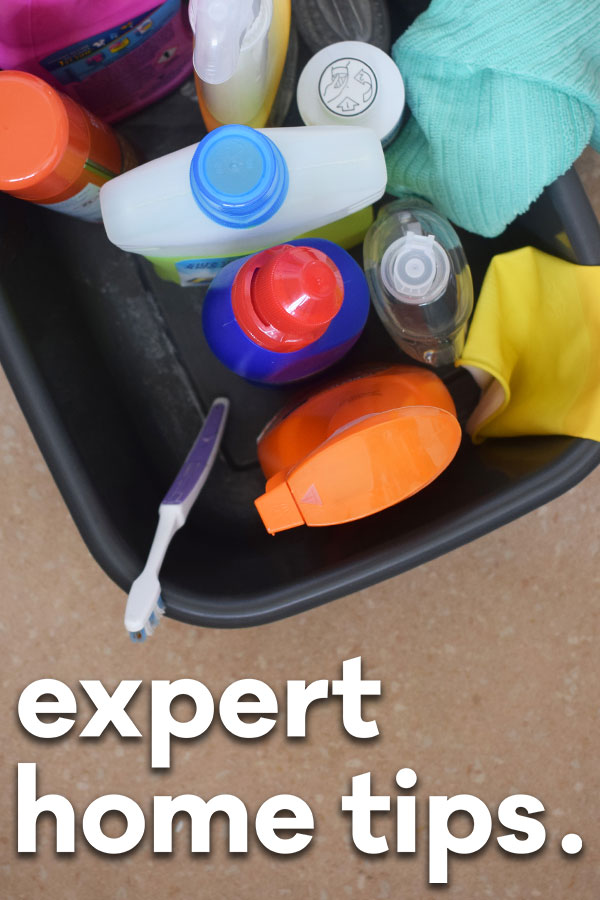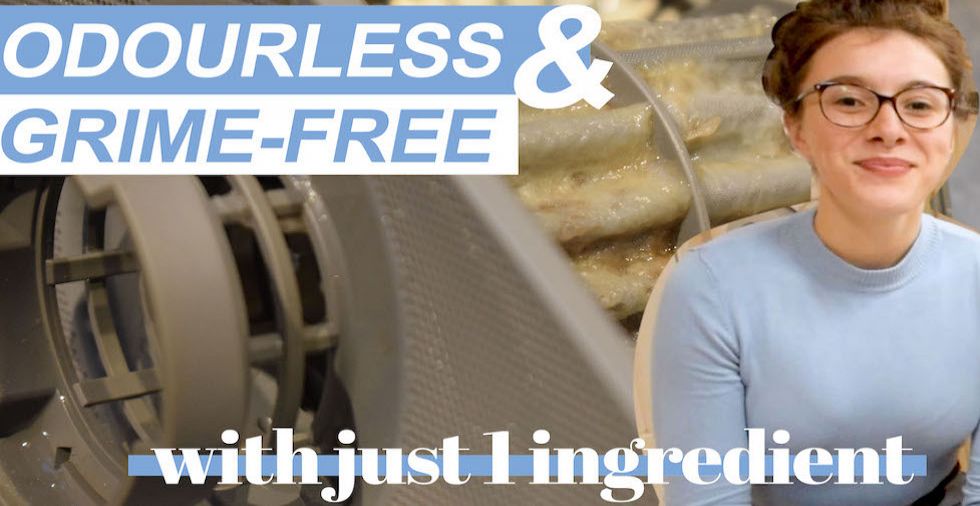It's not unreasonable to presume that your dishwasher would be self-cleaning - after all, it does a great job of getting our pots and pans spick and span.
Unfortunately, it's not that easy, and even your dishwasher needs a little helping hand from time-to-time.
Today we're showing you how to clean your smelly dishwasher inside and out to get it looking (and cleaning) better than ever.
How do dishwashers work?
Before we get started, it's helpful to know a bit about how dishwashers actually work. This will help you understand which parts of the machine need cleaning, and, more importantly, why.
- Water enters the dishwasher at the base until a shallow pool of water is formed.
- Heating elements at the bottom of the machine increase the temperature of this water to around 60ºC.
- This water is then pumped to the spray arms at the bottom and top of the machine, where the water pressure increases, forcing it through the holes in the arms.
- The water washer your dishes then drops back down.
- Any food debris is collected in the filters at the bottom of the machine, before being pumped back round.
How to clean a smelly dishwasher
Cleaning your dishwasher may not have been a task you'd expected to add to your household cleaning list, but on the bright side, you can get it done in just 6 simple steps using the amazing household ingredients, vinegar.
1. How to clean dishwasher filters
Have you ever stopped to consider where all the bits of food on your plates, pots and cutlery go in the dishwasher?
Dishwasher filters at the bottom of the machine catch and collect bits of food debris that come off in the wash cycle. This prevents them both from clogging the drain and being redistributed onto your plates.
If you have self-cleaning dishwasher filters, you won't need to remove them periodically. Manual filters, however, need to be taken out and cleaned. (Self-cleaning filters will be covered in a raised plastic grid, whereas manual filters will be a small, plastic cylinder at the bottom of the machine, surrounded by a metal mesh).
Clean them: to clean manual filters, remove both the plastic cylinder and metal mesh from the machine and place them into your sink. Wash the cylinder under running water with a scrubbing brush, and rinse the metal filters under running water. We recommend doing this every other week or so (more often if you use your dishwasher daily).
2. Cleaning the spray arms
The spray arms can be found at the bottom and top of your dishwasher. Water is brought to them, which is then ejected through small holes along the arms.
Hard water can build up in and around the holes, and the arms themselves can become gunky.
Clean it: Wipe both spray arms down with a clean cloth. Then, take a cotton bud and poke into each of the holes that run along the arms. This should break down any limescale so the jets can perform efficiently. This should be carried out every 3-6 months or so, along with step 4 and 5 below.
3. Rinsing with vinegar
Vinegar is an amazing deodoriser, and also excellent at fighting limescale. It will completely sterilize your dishwasher, and, best of all, requires almost no effort on your part!
Try it: To try this home remedy for yourself, simply fill a bowl with 2 cups of distilled white vinegar and place on the top shelf of an empty dishwasher. Then, run the hottest cycle possible to blast through hard water buildup, remove food or soap residue and any smelly odours on the interior of your washing machine.
Other acidic liquids can be substituted in vinegar's place, such as lemon juice. Add one cup to a mug and place on the top shelf of your machine. Run an empty, hot cycle to achieve similar results.
4. Cleaning the door seal
Because your dishwasher spends a lot of its time wet, the silicone seal around the door can easily develop mould if you're not careful. Not everyone is careful when loading their dishes, so it's likely food spillages will end up on there too.
Clean it: The door seal is easy to keep clean - just wipe it with a clean cloth, then again with diluted disinfectant and dry with a paper towel once the vinegar wash has finished (the heat will help to loosen the dirst). Try to do this at least once a week.
5. Cleaning the outside
Once the inside of your dishwasher is looking glorious, it's time to get the outside gleaming too.
You'll be pleased to know this is much easier than the interior - all you need to do is wipe it down with discinfectant and a clean cloth to remove any dirt and stuck-on food.
Additional steps
6. Washing with baking soda
If your dishwasher still isn't as clean as you'd like it, it's time to turn to another kitchen cupboard staple - baking soda.
Similarly to vinegar, baking soda is deodorising and also slightly abrasive to naturally remove any lingering odours or gunk from inside the machine, making it a great homemade dishwasher cleaner.
Try it: Remove the bottom rack and sprinkle baking soda over the bottom of the machine. Replace the rack, and run the dishwasher empty on the hottest cycle possible.
7. Removing dishwasher mould
If there's mould and mildew inside your dishwasher, a bleach cycle will kill it and leave your machine sparkling clean. Add 1 cup to the bottom of an empty dishwasher before running a full cycle.
Once you're finished, check out our tips for how to get bleach smells off your hands.
NOTE: Never mix bleach with vinegar as it will cause a reaction. Additionally, don't use bleach in a stainless steel machine as it will affect the finish.
Next, read our articles on how long dishwashers last and what to do if your dishwasher isn't drying. For more troubleshooting, find out how to fix your dishwasher when the pods aren't dissolving.
That's a wrap! How do you keep your dishwasher as clean as the dishes that come out of it? Let us know in the comments below.


Hello Thanks for the really useful dishwasher cleaning tips. There are quite a few i will try. Usually just buy a dishwasher cleaner liquid in a bottle that u put upside down and run a hot wash. Well thanks again. Tracey
We're glad you found them helpful!